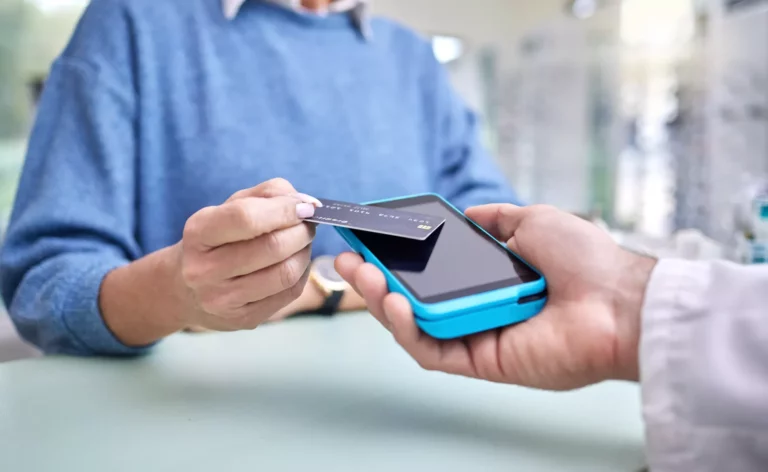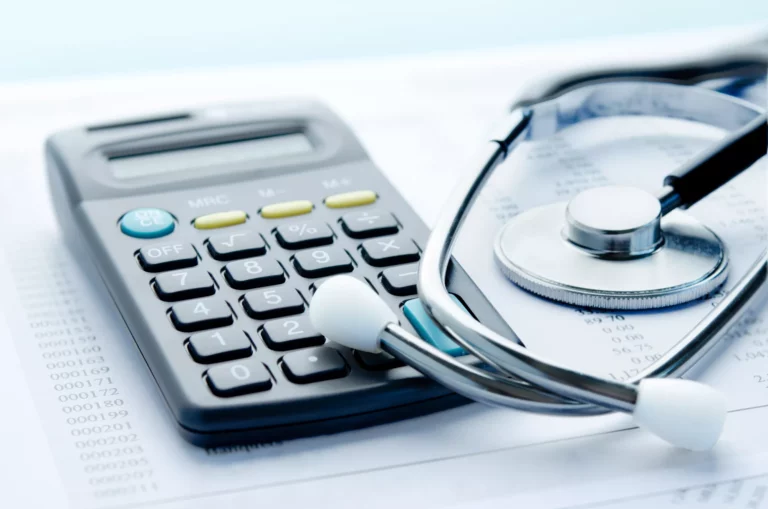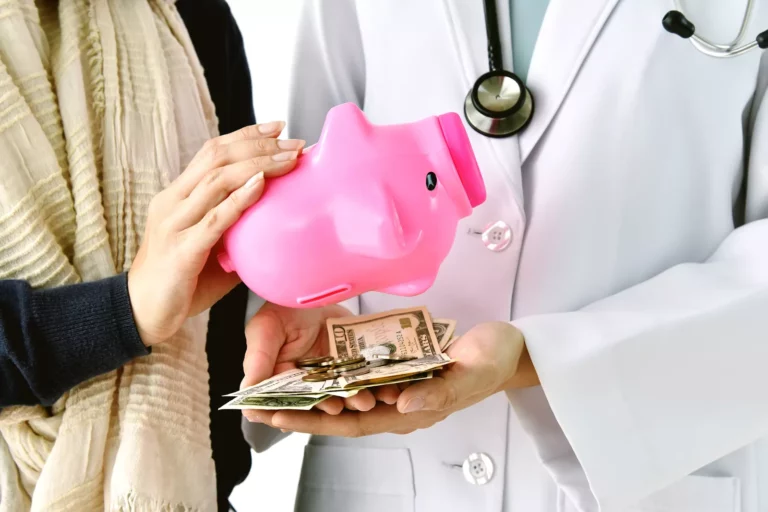Chances are that most healthcare organizations reading this article have had an experience with patients not paying their medical bills.
In fact, collecting patient payments is one of the biggest challenges for revenue cycle teams. And, as high-deductible health plans continue to gain traction with patients, the overall share of outstanding balances that go unpaid will have a bigger impact on an organization’s total revenue.
One way to improve medical billings and collections is to focus on easing payments pain points with technology. In this guide, we are going to look at all things patient payments solutions, including what they are, their benefits, and the features you should look for when evaluating your own patient collection strategy.
Let’s dive in.
Why Don’t Patients Pay Their Bills?
While it can be difficult to understand why someone wouldn’t pay their bill, there are many misconceptions when it comes to patient delinquency. Sure, some don’t pay because they can’t afford to or don’t want to. However, a good percentage of patients who fail to pay simply experience too much friction in the payment process.
A 2020 survey by Waystar (as reported by HealthLeaders) is enlightening in this respect. When asked what would help them pay their bills on time, 42% of respondents said a clearer explanation of what is owed versus what insurance will cover, and 24% said a clearer explanation of when payments are due.
The data shows that medical billing is outdated. Paper statements in the mail are not only confusing but easily ignored. Email notifications get lost in oversaturated inboxes. Patient portals are used by less than half of patients, and these tend to be patients with chronic conditions.
For this reason, it is critical to think carefully about how you can make the payment process easier for patients in our post-iPhone world. Sometimes a little bit of technology can go a long way in facilitating patient payments.
What Is a Patient Payments Solution?
While the exact definition of a “payments solution” is likely to vary from medical professional to medical professional, most would agree that a payments solution is a technology solution that digitally transforms the patient billing/payments life cycle either in whole or in part.
These solutions simplify the patient financial experience with an easy-to-understand view of each patient’s financial responsibility. They should offer patients the flexibility of a diverse range of payments methods, as well as advanced integration capabilities for healthcare providers.
Essentially, a modern patient payments solution will meet the needs of both your medical practice and your patients. To learn more about the healthcare financial journey and why the industry is ready for a tech-driven change, check out this recent podcast interview with AccessOne CEO Mark Spinner.
Benefits of Patient Payments Solutions
To understand the many benefits of a modern patient payments solution, it will help to look at some hard data from InstaMed’s Healthcare Payments Annual Report
- Almost 90% of healthcare organizations continue to use paper-based and manual processes for patient billing.
- 82% of patients want to make all of their healthcare payments in a single place.
- 85% of patients say they prefer an electronic payment method when paying medical bills.
The takeaway? Healthcare providers are not aligned with patient preferences. This is perhaps the biggest benefit of implementing a patient payments solution: by removing barriers to patient payments you naturally align with the preference of the modern patient.
Additional benefits to note include:
- Streamlined Workflows: cut down to-do lists for your staff, eliminate administrative tasks, and save time by empowering patients to make payments when/how it is convenient for them.
- Engaged Patients: agile payments solutions empower patients to invest in their medical care and treatment as it puts the healthcare financial experience in the hands of patients.
- Data Insights: patient payments solutions make it easy for healthcare providers to analyze and better understand the patient billing lifecycle, identify trends, and make changes as needed.
To summarize: a modern patient payments solution will help your practice cut costs, save time, work smarter, and give patients the digital solution they so desperately want and need.
Patient Payments Solutions: What Features to Look For
Although tech solutions go a long way in eliminating the challenges of traditional healthcare payments, they are not without their points of friction. One of the most common areas where patients experience friction during the payments process is in their pay portal.
It’s important to remember that not everyone spends all day sitting in front of a computer. Not every patient has a lot of experience working with technical applications or is digitally savvy.
It can be intimidating to take a look at a screen with a lot of buttons and boxes when people are trying to pay their bills. Everything from logging into a patient portal to having to find an account number tied to a mailed paper statement can cause patients to abandon the payments process.
As you evaluate which patient payments solution is right for your medical practice, be sure to put yourself in the shoes of your patients. Ideally, a patient payments solution designed to eliminate friction will have the following features:
- User friendly.
- SMS-optimized.
- Fully digital (i.e., not dependent on analog paper statements).
- HIPAA, TCPA, and PCI compliance.
Given the volumes of confidential information involved in healthcare payments, security should be a top priority for healthcare providers when it comes to selecting a tech solution. Encryption is one of the most important factors to keep in mind as 1) payments cybercrime is on the rise, and 2) strong encryption is one of the most effective strategies for preventing cybercrime
Also, keep in mind that even though there are some solutions that may be marketed as versatile, many are not going to be compliant with HIPAA. This is why it is always better to use a solution that has been specifically designed for the medical field.
Popular Healthcare Payments Solutions
There are a lot of options available to create a better patient payment experience. Which solution is right for your organization will depend on your revenue cycle and patient needs.
While some healthcare providers want to own the entire revenue cycle process, others are narrowly focused on solving specific aspects of the revenue cycle process.
Some of the most popular patient payments solutions include:
- InstaMed Patient Payments
- PaymentSafe by Experian
- Patientco (Waystar)
- MobilePay by AccessOne
When weighing the pros and cons of these solutions, healthcare providers should not only look for the features we discussed in the section above, but they should also keep in mind the needs of their revenue cycle teams.
Understanding that your revenue cycle team is tasked with ensuring the financial health of your organization, be sure to ask the following questions:
- Does this solution integrate with my HIS? Will it be seamless?
- How long will it take to implement? Is there downtime?
- Will there be an ROI? How will we measure this?
- Will I collect more payments? Or will I just be adding costs?
- Will this technology enable me to scale and save on labor?
If you struggle to answer these questions, it may be time to reevaluate your solution options.
Eliminate Healthcare Payments Friction With SMS
Rather than force patients to navigate a complicated log-in workflow, our MobilePay solution leverages the power of SMS to eliminate friction.
With an SMS system, patients do not have to remember a set of login credentials. They do not have to worry about remembering their username, and they do not have to worry about remembering a password. There’s no app to download, no patient portal to log into, and no need for a digital experience to be connected to a physical piece of paper.
When patients receive a message, there will be a link they can use to pay their bills. All they need to do is click on the link to be taken to the payment page. Because the process is so easy (and aligns with the preferences of the modern patient), healthcare providers are likely to see an immediate increase in the percentage of bills paid on time.
Does this sound too good to be true? It’s not. To learn more, check out this customer story from Mount Sinai, and discover how the healthcare provider increased patient payments collections by 23% with AccessOne MobilePay.
AccessOne: Payments Solutions That Empower Patients
Our goal at AccessOne is to improve the healthcare experience for providers and patients alike.
How do we do this? Through smart technology that aligns the interests of all payments stakeholders and allows patients to pay with confidence while driving revenue for your organization.
If you’re interested in learning more about our suite of patient payments solutions (we offer a solution for every patient in your care), don’t hesitate to book a demo today.


